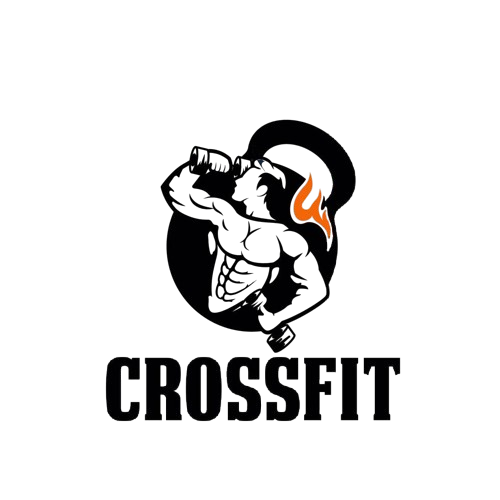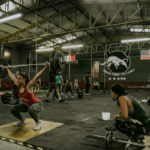Wondering what fuels the passion of countless fitness enthusiasts worldwide? Enter the dynamic world of CrossFit workout—a regimen that challenges the boundaries of strength, endurance, and flexibility. This high-intensity fitness phenomenon has taken the exercise community by storm, but what exactly makes it stand out from traditional workout routines? Join us as we dive into the core of CrossFit, exploring its unique principles, varied exercises, and the community spirit that binds its practitioners. Ready to redefine your fitness journey? Let’s get started.
The Origins of CrossFit Training
The genesis of CrossFit, a now globally recognized fitness philosophy, traces back to the late 1990s, when Greg Glassman, a former gymnast, sought to create a comprehensive workout regimen that emphasized varied, high-intensity, functional movements. Glassman’s pioneering approach was driven by the belief that fitness was not just about specialization but about preparing the body for any physical challenge. The first official CrossFit gym opened in Santa Cruz, California, in 2000, laying the foundation for what would become a worldwide fitness movement.
At its core, CrossFit aims to develop proficiency across multiple fitness domains, including stamina, strength, flexibility, power, speed, agility, balance, coordination, and accuracy. This methodology was distinct in its rejection of the traditional gym routine, which often focused on isolated muscle group exercises. Instead, CrossFit workouts, known as “Workouts of the Day” (WODs), combine elements from gymnastics, weightlifting, and cardiovascular training. The community aspect of CrossFit has been pivotal in its spread, with affiliates fostering a culture of support and competition.
The early 2000s saw rapid growth for CrossFit, buoyed by the advent of the internet and social media, which helped spread Glassman’s fitness philosophy. By 2005, there were over 13 CrossFit-affiliated gyms, a number that would explode in the following years. Today, there are thousands of CrossFit gyms around the world, known as “boxes,” each upholding the core principles of the CrossFit regimen while also contributing to its ongoing evolution. The introduction of the CrossFit Games in 2007, an annual fitness competition, has further cemented CrossFit’s status as a major force in the fitness industry.
Key Milestones in CrossFit’s History
| Year | Event | Impact |
|---|---|---|
| 2000 | First CrossFit gym opens | Birth of the CrossFit movement |
| 2005 | Number of affiliates hits 13 | Beginnings of global spread |
| 2007 | First CrossFit Games | Increased visibility and community engagement |
| 2010 | Reebok partnership announced | Commercial expansion and mainstream recognition |
| 2020 | Ownership change | New direction and growth strategies |
In delving deeper into the origins of CrossFit, it’s essential to appreciate the innovative blend of disciplines that CrossFit incorporates. By challenging the conventional wisdom of fitness, Greg Glassman and his early adopters embarked on a journey that would fundamentally alter the landscape of personal fitness and competitive sports. CrossFit’s history is not just a testament to the program’s effectiveness but also to the power of community in achieving personal and collective goals.
Exploring the Philosophical Underpinnings of CrossFit
This deeper exploration reveals CrossFit as more than a fitness regimen; it’s a lifestyle and a philosophy. The emphasis on scalability and adaptability makes it accessible to individuals at any fitness level, promoting inclusivity within its community. As CrossFit continues to evolve, its origins remain a crucial part of understanding its current identity and future trajectory.
CrossFit Workouts: Core Principles
CrossFit, a fitness philosophy and competitive fitness sport, has rapidly gained popularity worldwide due to its broad inclusivity and dynamic approach to fitness. At the heart of CrossFit workouts lie core principles that distinguish it from traditional workout regimens. These principles focus on varied, high-intensity, functional movements that prepare the body for the rigors of daily life and unexpected challenges. The essence of CrossFit is to make fitness comprehensive, encompassing endurance, strength, flexibility, power, speed, coordination, agility, balance, and accuracy.
The first principle is the variety of workouts, which aims to prepare participants for any physical challenge. By constantly changing workouts, CrossFit avoids the plateau effect associated with traditional fitness routines, ensuring continuous improvement and engagement. This variety is encapsulated in the Workout of the Day (WOD), which challenges individuals with different exercises each day. Another foundational principle is intensity; CrossFit workouts are known for their high-intensity levels, which are scalable based on an individual’s fitness level but are designed to push limits and yield measurable results.
Lastly, the principle of functional movements is central to CrossFit. These movements reflect the best aspects of gymnastics, weightlifting, running, rowing, and more, emphasizing compound movements over isolation exercises. This approach ensures that CrossFit workouts improve not only fitness but also enhance the ability to perform daily activities with ease. The inclusion of Olympic weightlifting techniques helps participants develop power and speed, two critical components of overall fitness. By integrating these core principles, CrossFit creates a comprehensive workout regimen that is both inclusive and challenging for individuals at all levels of fitness.
Additional insights into CrossFit’s core principles reveal a deep commitment to not only physical fitness but also community building. The communal aspect of CrossFit encourages motivation, accountability, and a competitive yet supportive environment. This unique blend of social and physical challenge contributes significantly to its effectiveness and popularity.
| Principle | Description | Benefits |
|---|---|---|
| Variety | Constantly varied workouts to prevent adaptation | Improves overall fitness, prevents boredom |
| Intensity | High-intensity training for maximum efficiency | Enhances endurance, strength, and speed |
| Functional Movements | Movements that mimic real-life activities | Improves daily functionality and reduces injury risk |
| Scalability | Adaptable exercises to suit individual fitness levels | Makes CrossFit accessible to a wide audience |
| Community | The supportive and competitive CrossFit community | Increases motivation and accountability |
Understanding these core principles provides a solid foundation for anyone interested in starting or improving their CrossFit journey. Whether your goal is to lose weight, enhance physical performance, or simply become a healthier version of yourself, CrossFit offers a structured yet flexible path to achieve your fitness goals. Its emphasis on scalability ensures that workouts can be adapted to any skill level, making it an inclusive option for individuals from all walks of life. As you dive into the world of CrossFit, remember that progress is a personal journey, and consistency is key to unlocking the full benefits of this dynamic fitness program.
Typical Exercises in CrossFit Routines
CrossFit is renowned for its high-intensity, functional movements that span across various domains of fitness, incorporating elements from weightlifting, gymnastics, and cardiovascular training. At the heart of CrossFit workouts are a core set of exercises that are designed to build strength, agility, and endurance. One of the fundamental aspects of CrossFit is its emphasis on scalability, allowing individuals at different fitness levels to modify the intensity of the exercises to suit their capabilities.
A typical CrossFit routine might include exercises such as deadlifts, which build overall strength by engaging multiple muscle groups simultaneously, and box jumps, which improve cardiovascular fitness and explosiveness. Other staples include Olympic lifts like the snatch and the clean and jerk, which are complex movements that develop power, speed, and coordination. Additionally, gymnastic exercises such as pull-ups, push-ups, and burpees are frequently integrated into workouts to enhance body control and muscular endurance.
| Exercise Type | Benefits | Example Exercises |
|---|---|---|
| Weightlifting | Strength, Power | Deadlift, Snatch |
| Gymnastics | Agility, Endurance | Pull-ups, Push-ups |
| Cardiovascular | Stamina, Speed | Box Jumps, Burpees |
| Olympic Lifts | Coordination, Flexibility | Clean and Jerk, Snatch |
| Bodyweight Movements | Control, Balance | Air Squats, Sit-ups |
Understanding the typical exercises in CrossFit routines provides a glimpse into the comprehensive approach this training methodology takes towards fitness. By blending diverse exercise modalities, CrossFit aims to prepare individuals for any physical challenge. The versatility of exercises not only prevents boredom but also ensures the development of a well-rounded athlete.
Further Insights into CrossFit Exercises
The incorporation of such a wide array of exercises into CrossFit routines is not arbitrary. Each exercise is selected for its potential to improve functional fitness—fitness that enhances one’s ability to perform daily activities with ease. This focus on functional movements is what sets CrossFit apart from other training regimens, ensuring that practitioners are not just fit in the gym but also beyond its walls.
Deeper Understanding of Functional Fitness in CrossFit
By emphasizing functional fitness, CrossFit goes beyond mere aesthetic goals, aiming for real-world applications of strength and endurance. This approach ensures that individuals are equipped with the physical capabilities necessary to tackle real-life challenges, marking a shift from traditional gym workouts to a more holistic view of fitness and health.
Understanding CrossFit Terminology and Acronyms
CrossFit, a high-intensity fitness program that incorporates elements from several sports and types of exercise, is as renowned for its community as it is for its challenging workouts. Part of becoming immersed in this community involves understanding the unique lingo and acronyms that are frequently used within a CrossFit box (gym). This terminology not only helps in navigating workouts more effectively but also in fostering a sense of belonging among participants.
At the heart of CrossFit are the WODs (Workouts of the Day), which are central to the program’s structure. These workouts are known for their intensity and for the variety they offer, ensuring that participants never fall into a routine. Another term frequently encountered is AMRAP (As Many Rounds (or Reps) as Possible), which challenges athletes to complete as many rounds of a circuit as they can within a set time frame. This is a test of both physical and mental endurance. Similarly, the term EMOM (Every Minute on the Minute) denotes workouts where athletes perform a specific task at the start of every minute for a set number of minutes.
Understanding these terms is crucial for anyone looking to fully immerse themselves in the CrossFit culture. They not only aid in following the workouts more efficiently but also help in tracking progress and setting fitness goals. Furthermore, this specialized vocabulary enables clearer communication among community members, thereby enhancing the overall CrossFit experience.
| Acronym | Full Form | Description |
|---|---|---|
| WOD | Workout of the Day | The specific set of exercises prescribed for that day. |
| AMRAP | As Many Rounds/Reps as Possible | A time-based challenge to complete as many rounds or repetitions of a circuit as possible. |
| EMOM | Every Minute on the Minute | Performing a specific number of exercises at the start of every minute for a set period. |
| RX | Prescribed | The standard level of weight or difficulty for a workout. |
| PR | Personal Record | The highest amount of weight lifted or the fastest time achieved by an individual on a specific exercise or WOD. |
Delving deeper into the world of CrossFit, it becomes apparent that the terminology used is not just jargon but a crucial element of the culture. These terms and acronyms serve as a common language, uniting participants from diverse backgrounds and levels of fitness. They encapsulate the essence of the workouts and the philosophy behind them, emphasizing efficiency, adaptability, and community. For newcomers, mastering this language is the first step towards integrating into the CrossFit community and fully benefiting from its workouts. As individuals continue their CrossFit journey, they not only expand their physical capabilities but also their understanding of this unique fitness dialect, further enriching their experience within this dynamic community.
The Role of Community in CrossFit
The essence of CrossFit extends far beyond the rigorous workouts and challenging exercises; it is deeply rooted in the community aspect that it fosters. At its core, CrossFit is not just about individual achievements but also about the collective success and support system built within its community. This communal spirit is what sets CrossFit apart from other fitness regimes, making it a unique and powerful way to enhance not only physical strength but also social connections and mental resilience.
The community in CrossFit acts as a motivational force, pushing members to achieve their personal best while encouraging camaraderie and support. This environment is built on the foundation of shared experiences, challenges, and triumphs. Whether it’s cheering on the last person to finish a workout or celebrating a personal record, the sense of belonging and collective achievement is palpable. This strong bond among members leads to a sense of accountability, which is critical in maintaining consistency and progress in one’s fitness journey. Moreover, the diversity within the CrossFit community—with people of all ages, backgrounds, and fitness levels coming together—enriches the experience, fostering an inclusive atmosphere that welcomes everyone.
Furthermore, the role of coaches and instructors in nurturing the community spirit cannot be overstated. They are not only guides in the physical aspect of the workouts but also pivotal in creating a supportive and positive environment. Their expertise and encouragement play a significant role in ensuring that every member feels valued and motivated to push their limits.
Building a Supportive CrossFit Community
Creating a supportive CrossFit community involves more than just group workouts; it’s about building relationships and a sense of belonging among members. This is achieved through regular social events, workshops, and team competitions, which help deepen connections and foster a strong community spirit. Such activities encourage members to interact outside of workouts, leading to lasting friendships and a more cohesive community. This social aspect of CrossFit is as integral to its success as the physical training itself.
| Element | Role in Community Building | Impact on Members |
|---|---|---|
| Group Workouts | Encourages teamwork and camaraderie | Increases motivation and accountability |
| Social Events | Strengthens relationships outside workouts | Enhances sense of belonging and support |
| Coaching Staff | Provides guidance and encouragement | Boosts confidence and performance |
| Team Competitions | Builds competitive spirit while fostering teamwork | Improves physical abilities and social bonds |
| Diversity | Brings varied perspectives and challenges | Enriches community experience and inclusivity |
In conclusion, the role of community in CrossFit is fundamental to its philosophy and success. It is the glue that holds members together, creating a supportive network that extends beyond the walls of the gym. This community aspect not only enhances the CrossFit experience but also contributes significantly to the personal growth and well-being of its members. Thus, the spirit of community is indeed the heartbeat of CrossFit, making it much more than a fitness program—it’s a way of life.
Scaling and Adaptation in CrossFit Workouts
One of the foundational principles of CrossFit is its universal scalability, making it an accessible fitness methodology for individuals of all fitness levels, ages, and capabilities. The concept of scaling and adaptation allows athletes to modify the intensity, volume, or type of exercise to match their current fitness level, ensuring that they can participate in the same workout as the rest of the class, but in a way that is appropriate for their abilities. This principle ensures that everyone, from beginners to elite athletes, can experience the benefits of CrossFit workouts while minimizing the risk of injury.
Scaling can involve adjustments such as reducing the weight lifted, altering the complexity of a movement, or decreasing the workout’s duration. For instance, a beginner might perform a pull-up with the assistance of a band, while a more advanced athlete performs it unassisted. Adaptations can also be made for individuals with specific injuries or limitations, ensuring they can still participate effectively in the workout.
The beauty of CrossFit lies in its adaptability. Coaches are trained to tailor workouts to individual needs, promoting inclusivity and community within a class. This personalized approach helps individuals progress at their own pace, setting and achieving personal fitness goals. As participants’ fitness levels improve, the degree of scaling can be reduced, allowing for continuous challenge and development.
| Exercise | Scaled Version | Standard Version |
|---|---|---|
| Pull-Ups | Band-Assisted Pull-Ups | Unassisted Pull-Ups |
| Deadlifts | Reduced Weight | Standard RX Weight |
| Box Jumps | Step-Ups | Full Box Jumps |
| Handstand Push-Ups | Push-Ups | Handstand Push-Ups |
| Thrusters | PVC Pipe or Light Bar | Standard RX Weight |
Understanding the importance of scaling and adaptation in CrossFit workouts is crucial for both coaches and athletes. It encourages a supportive environment where everyone can participate and benefit from the workouts, regardless of their starting point. This approach to fitness not only helps in building a stronger body but also fosters a sense of accomplishment and belonging within the CrossFit community.
CrossFit Competitions: What to Expect
CrossFit competitions are a true test of strength, endurance, and versatility, drawing athletes from all walks of life and fitness levels. These events are designed to push participants to their limits across a wide variety of disciplines, including weightlifting, gymnastics, and cardiovascular exercises. Competitors should expect to face a series of challenging workouts, known as WODs (Workouts of the Day), that are often not announced until right before the event, adding an element of unpredictability and requiring athletes to be well-rounded and adaptable.
The atmosphere at a CrossFit competition is electric, with athletes and spectators alike sharing a passion for fitness and improvement. The community aspect is a huge part of what makes these events so special, offering support and motivation to push through even the toughest challenges. However, it’s important for competitors to remember that preparation is key. This not only involves physical training but also mental readiness, as the competitive environment can be both exhilarating and intense.
For those new to CrossFit competitions, here are a few things you might encounter:
- Varied WODs that test different fitness domains
- Time-capped events to add pressure and intensity
- Judges meticulously ensuring that all movements meet the competition standards
- Scaled and Rx’d divisions allowing athletes of various skill levels to compete
- A supportive community cheering you on, whether you’re a first-timer or a seasoned competitor
Entering a CrossFit competition can be a daunting yet exhilarating experience. It’s an opportunity to push your limits, meet like-minded individuals, and perhaps most importantly, learn a lot about yourself as an athlete and as an individual. The journey to and through a CrossFit competition is filled with hard work, dedication, and often, personal growth.
As we conclude, remember that CrossFit competitions are not just about winning but about setting personal goals, overcoming obstacles, and celebrating the community’s collective strength and spirit. Whether you’re considering your first competition or looking to elevate your performance at your next event, the experience is bound to be enriching, challenging, and ultimately rewarding.







